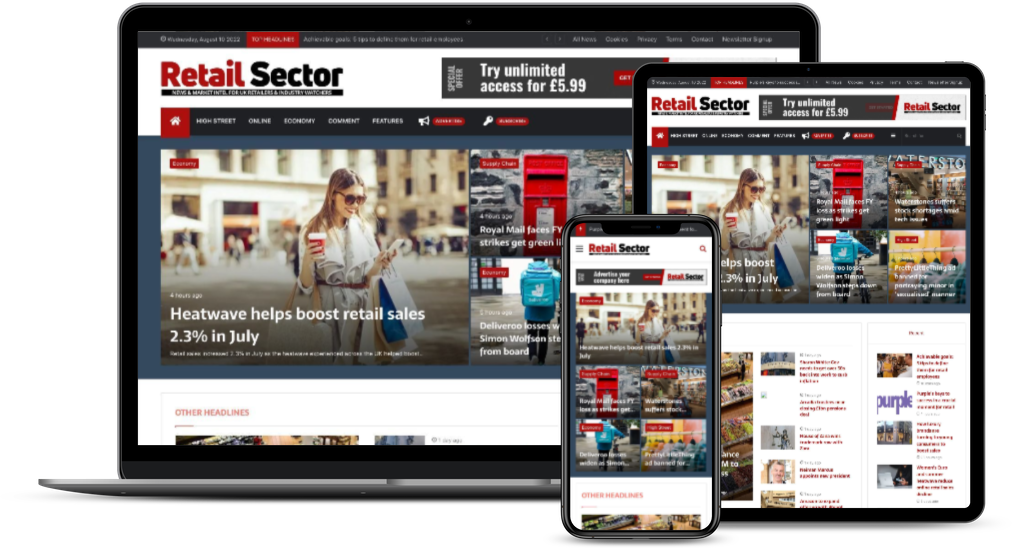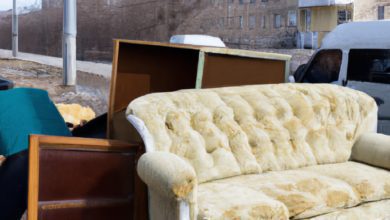A ‘fall from grace’: what went wrong with Made.com
Having ridden the waves of an online shopping boom, Made.com was flying high during the pandemic, but would soon tumble into collapse as issues with stock and funding accelerated. With its brand and IP now snapped up by Next after talks with rescuers failed, we spoke to Paul Zalkin, retail restructuring and insolvency expert at Quantuma, about what went wrong with the former retail powerhouse

Made.com was once a force to be reckoned with in the retail landscape. Having launched 12 years ago, the group had since enjoyed a rise to dizzying new heights. The company used sleek marketing to tap into its millennial customer base, and became one of the most popular destinations for modern furnishings in the UK. From revenues of £48m in 2015, to £173m in 2019, as the group’s reach widened so did its sales.
More recently, the group welcomed record results and an ever-growing customer base amid the pandemic, hitting a high of £434m in sales in FY21. It even went public for the first time in June 2021 at a staggering £775m, at a time it was still basking in the afterglow of the pandemic’s trading boost. The glory would not be long-lived, and earlier this month, it collapsed into administration following a long struggle to secure investors as the business struggled to ultimately adapt to a post-pandemic slowdown.
We spoke to Paul Zalkin, a retail restructuring and insolvency expert at Quantuma, to find out more about the reasons that led to its collapse, as well as the insolvency process that followed.
From upwards momentum to terminal decline
“Funnily enough, their strong performance in the pandemic was quite a big part of their eventual downfall”, says Zalkin. When the sector emerged from the pandemic, and normalised sales volumes returned for online retail, Made.com struggled to adapt to the change in momentum, and was suddenly faced what Zalkin describes as a working capital shortfall.
He explains: “One of the major issues that Made.com found itself facing when business slowed was a build up of stock. As demand came to a halt, they started holding inventory they couldn’t shift and began to tie up working capital in that.” Made.com’s business model had largely been based on overstocking inventory to ensure a short lead time for customers, after all, and when customers reigned in their spending, this model began to collapse.
Over the past year, its issues with stock were only exacerbated by growing supply chain disruptions in the sector. In a trading update last December, the group slashed its guidance, citing issues with the supply chain as a major cause. At the time, it said strong demand for its products came against the backdrop of “significant” ongoing supply chain disruptions, including the extended closure of manufacturing in Vietnam, port congestions and a buildup of shipping times.
All the while, its stock continued to tie up capital. “With any business like Made.com, it’s all about having the right stock in the right place at the right time and being able to meet customer demand,” says Zalkin. “If you’ve got the wrong stock mix, and there’s suddenly no demand for the stock you’re holding, you couple that with supply chain issues and you’ve got a big problem on your hands. You’re left with working capital tied up in obsolete stock.”
He adds: “Equally, if you have working capital shortfalls, and you’re starting to stretch your creditor payment terms, your key suppliers are going to get twitchy and things can spiral. Before you know it, you’ve got a balance sheet which is moving from stress into distress, at which point you need to do something about it and raise emergency capital.”
As Made.com continued to face struggles with stock and inventory, in October it revealed it needed up to £70m in funding to continue operating as a standalone public company. “There was just nobody who came forward who was prepared to invest that sort of money,” says Zalkin. “The company was now in terminal decline, so raising further money on the capital markets wasn’t an option, but rescue funding wasn’t an option either.”
PwC, who was appointed to handle Made.com’s administration, was ultimately unable to secure a going concern sale of the business and assets, instead limited to selling certain assets of the group and effectively breaking it up. “It went from being a business which IPO’d at £775m to a business, a year and a bit later, that had effectively been liquidated, which is quite extraordinary,” says Zalkin.
So was the nature of this decline unique? “It was an unusually fast fall from grace”, Zalkin notes. “To go from having a viable and trading business that has been valued at that incredible amount of money, to the stage where your administrators can only sell the assets in such a short space of time is not a common scenario for a business of this size.”
Why a final rescue bid failed
Zalkin explains Made.com’s insolvency was initially run as an accelerated M&A process, where administrators are faced with a “more compressed timescale to try and identify a funder to ideally rescue the company and its business as a going concern, but at the very least, the company”.
However, in the fated case of Made.com, the accelerated M&A process failed to identify an investor willing to take on the full company and its baggage, and PwC instead looked to sell the business and assets on a pre-pack administration basis. “It would have been better to at least rescue business and assets, if not the whole company, after all,” Zalkin notes.
One of the reasons for investors’ wariness was, in part, the issue of Made.com’s employees. “I suspect investors would have been put off by the prospect of taking on a huge liability for employees”, says Zalkin. “When you transfer the business and assets via a pre-pack administration process, the purchaser takes on liability for all of the staff, as all of the accrued contractual and statutory benefits move across to the purchaser.”
Made.com, after all, had over 500 staff at the time of its collapse, with Zalkin noting that “any purchaser looking at Made.com as a going concern would think, ‘If we’re going to reverse this into our existing platform, where we already have infrastructure, we don’t need 500 more staff’”. Any new buyer would need to “pick up the tab” for any redundancies made, having taken on the liability for Made.com staff, he adds. In addition, there would be “huge” working capital requirements to fulfil all of Made.com’s existing orders. “People have paid deposits for their furniture and investors would have to honour those, another huge working capital requirement which would eat into the profit margin for sales.”
Meanwhile, Made.com’s working capital requirement posed a “massive” issue for potential investors. “If the old business owes suppliers lots of money, those suppliers may say to the new owner, ‘We’re not enthusiastic about continuing to trade with Made.com version two, because we’ve already taken a huge loss on version one’. We call those ransom suppliers, and often those that purchase a business and assets out of an insolvency process will have to do commercial deals with them to effectively acknowledge the fact that they lost money in the old company.”
“When you do your calculations, what is the ransom payment going to be?,” he asks. “What are the employee liabilities going to be like? What’s it going to look like when they have to honour customer deposits? At the end of the day, the numbers just didn’t add up. These things boil down to: can we acquire the business and assets as a going concern, and will the future sales and profits generated justify the initial investment? Clearly the answer here was no.”
The next steps
While Made.com’s brand and IP was eventually scooped up by Next for a mere £3.4m, it remains to be seen how successful the new iteration will be. Next is no stranger to the homewares business of course, with interior and homewares products making up a significant part of its offering. ”On top of that, they’ve acquired some residual customer loyalty and residual equity in the brand recognition through this move,” says Zalkin. “As well as that, a large competitor in the market has also been eliminated, and Next can take advantage of that and up its own market share. They’ll now work hard to put this business back together in some form and relaunch the brand using their own business model.”
With consumer confidence on the decline, and customers holding back on discretionary spend, it remains to be seen how the resurrected Made.com brand will fare in its new form. “Ultimately, they’re smart people who have done their numbers and worked out they can potentially make a success of this,” says Zalkin, “though none of us have a crystal ball”.





